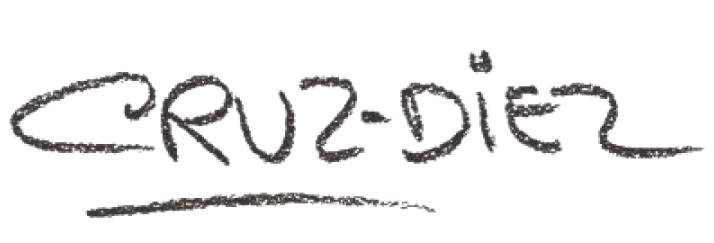Painting From Another Angle
(18.05.2011)
In the beginning, with darkness on the face of the deep, God said "Let there be light." Had he visited "Carlos Cruz-Diez: Color in Space and Time," at the Museum of Fine Arts here, he might have said "Let there be color." The MFA has made a specialty out of Latin American art, and it included the Venezuelan Mr. Cruz-Diez in a 2004 show, "Inverted Utopias: Avant-Garde Art in Latin America." This is the artist's first full retrospective. At first glance, it looks like a display of decorative experiments, only to draw you in slowly with its depth of focus and alluring splendors.
Mr. Cruz-Diez (born in 1923) has lived and worked for the past half-century in Paris. He began as a painter and still considers himself one. Aside from their dazzling palette, the five early conventional oils in the retrospective show little evidence of what Mr. Cruz-Diez would turn into. His mature work—especially the continuing series of "physichromies," of which 55 are on display—defies ordinary definitions of painting.
Mr. Cruz-Diez has become a master of visual effect, a creator of art with connections to many movements and "isms": Op Art, Kineticism, Abstract Expressionism, even Minimalism. You see his work and you think of Dan Flavin and Donald Judd, but you also think of Josef Albers, Victor Vasarely and, earlier, Paul Klee and Piet Mondrian. Because Mr. Cruz-Diez has called color "an autonomous reality . . . devoid of form" (and of anecdote and reference), you might also think of Ellsworth Kelly. But with one difference: Mr. Cruz-Diez's three-dimensional art changes as you move around it—or, in some cases, as it moves around you. It works in time as well as space.
Theories of color often seem as loony as astrology. Goethe, Vasily Kandinsky, Albers and Sonia Delaunay, among many others, had theories aplenty. Results are more important than intention. Paul Cézanne used color planes to flatten perspective. Georges Seurat tried to be even more scientific with his dots. Mondrian said that "color reinvigorates everything," and Paul Gauguin called it "the passionate equivalent of a sensation." Colors have had their own histories, going in and out of favor. People called Eugène Delacroix's reds "aggressive"; Kandinsky said that "lemon-yellow hurts the eyes."
Mr. Cruz-Diez has said that his earliest memories all involve color. And after his first paintings, he began, still in Caracas, to work on brightly colored murals and similar pieces. He made manipulable cylinders, placed them on walls in public places so that people could play with them. (His social commitment led eventually, as well, to large-scale displays of color—on buses, for example—and to architectural constructions, outdoor physichromies.)
He then began painting with oil on canvas and masonite, or lacquer on iron sheets, mounting biomorphic pieces on wood so that they seemed to float away from the wall or frame, to cast shadows upon it.
Then came the work with which he has made his grandest mark: the physichromies, originally plywood and cardboard strips, with repeated lines of color, often at different angles and depths. The dividing pieces became thicker. Two-dimensions became three. Think of a picture made with popsicle sticks coming out from a wall, with colors adding to and reflecting other colors. Other variations followed: Some pieces involve curves; some are framed, others not. Aluminum, plexiglass, silk-screening entered the process. Mr. Cruz-Diez began making his own tools and machines.
Whatever the materials and techniques, everything in the pieces changes according to the angle of the viewer. Take #2235, for example: When confronted head-on, it looks like vertical stripes of color with the hint of three equidistantly placed squares in their midst. When viewed from the side, they become Rothko-like boxes of blue, white and yellow. Or consider "Physichromie 174" (1965), of cardboard and casein, with inserts, all mounted on plywood within an aluminum strip frame. Delicate shades of orange, yellow, green and red constitute four oval shapes that, when viewed at an angle, reveal other leaflike shapes within.
Although Mr. Cruz-Diez says "we have exhausted the discourse upon which painting is based," he still wants to reproduce painting's singular pleasures, and to make sure the observer remains an active participant in the process of registering a sensation.
Other experiments have accompanied the physichromie series, specifically whole rooms and spaces that immerse the inhabitant/viewer in colored air that seems to bathe the skin. One such is an installation designed for Houston ("Chromo-interference Environment"). You stand, sit or move, enclosed in a circular room with bands of vertical color on the walls undulating in two directions. Think of a more sophisticated skating-rink strobe. The effect is dizzying. You become participant as well as viewer; you are clothed in a harlequinade of color that passes over both you and the walls.
But Mr. Cruz-Diez's physichromies are hypnotic rather than destabilizing. Seldom has an artist mixed technological precision and a social purpose with the sheer childlike joy of creating vibrant work that represents, and therefore symbolizes, nothing. What bottles were to Giorgio Morandi, and light bulbs to Dan Flavin, colored lines are to him.
Forget the theory and indulge the senses. Goethe, master of theory, also understood its limits: "Grau ist alle Theorie . . . und grün des Lebens goldner Baum." Theory is all gray. Life's golden tree is ever green . . . and black and red and blue and white and so on.
